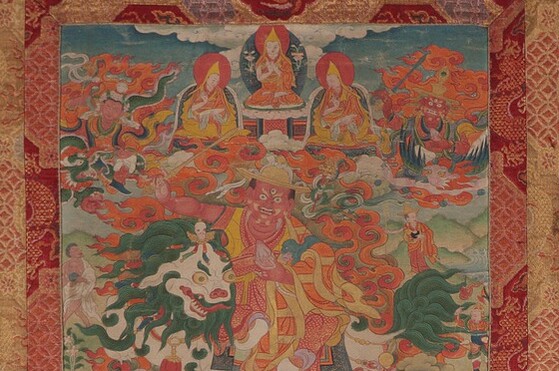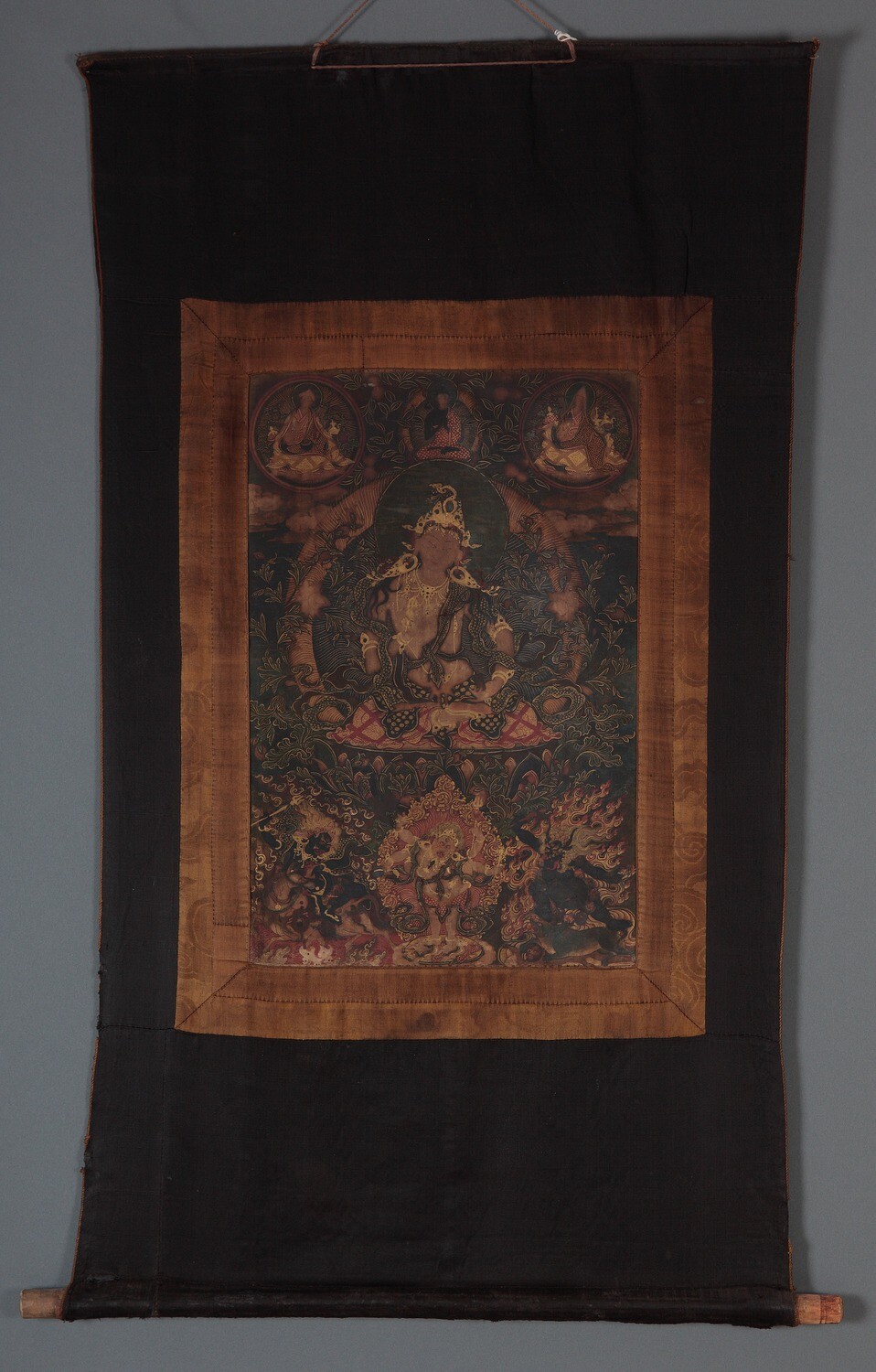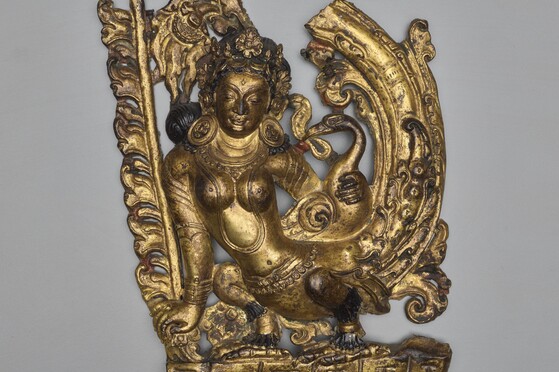The tanka (also spelled thankga, thanka or tangka) is a genre of Tibetan Buddhist painting. Similar to the Nepalese paubha, tankas feature brillant, beautiful images painted upon a fabric support. These objects display an almost overwhelming complexity— curls of etherial clouds, arms outstretched wide, gracefully arcing aureoles. Produced primarily as vertically-oriented hanging scrolls, they are typically paired with a textile cover to protect the object when not in use.
The Beinecke Rare Book & Manuscript Library has an extensive collection of well preserved tankas. While the three featured objects below are painted on cotton, many tankas use silk as the primary support. As the Yale collection, which includes objects dating from the seventeenth century through the nineteenth century, can attest, the traditions and visual grammar associated with tanka painting have a lengthy history which tells of a vibrant and thriving artistic tradition. The three objects highlighted below are each paired with explanatory text from the catalogue.

Detail, Tanka of Lobsang Choíökyi Gyaltsen.
Tibet MSS 62, Box 41
From the catalog: “A watercolor painting on cotton that depicts Lobsang Chökyi Gyaltsen wearing yellow and seated on cushions with smaller figures of protective divinities, ten lamas, and Güshi Khan (1582-1655), a Khoshut prince and leader of the Khoshut Khanate. The tanka includes a silk cover.”

Detail, Tanka of Dorje Shugden.
Tibet MSS 62. Box 24
From the catalog: “A Tibetan watercolor painting on cotton that depicts Dorje Shugden below three lamas and two deities and above three deities, as well as flanked by three smaller figures. Inscriptions in Tibetan on verso. The tanka includes a silk cover and ribbons.”

Tanka of Vajrasattva.
Tibet MSS 62, Box 72.
From the catalog: “A Tibetan watercolor painting on cotton that depicts Vajrasattva seated on a lotus holding a vajra (dorje) and ghanta (bell), below three smaller figures: a lama, Adi-Buddha, and Atiśa Dipankara Shrijnana, as well as above three protective divinities: Palden Lhamo, Mahākāla, and Yama.”
More on the Yale Tanka Collection
The tanka collection at Yale has been extensively digitized and a number of resource guides have been created. The Yale University Library Guide is particularly detailed and features a videos, links to digital exhibitions, and descriptions of further highlights of the collection.
Links to Yale Resources
More on the Beinecke Tanka Collection
Slideshow: Tibetan Selections from Other Collections Around Yale
External Links and Further Resources
Buddhist Digital Resource Center
Christies Feature on Tankas
The Field Museum on Tanka Conservation
The University of Pennsylvania Museum of Archaeology and Anthropology Collection
The Asian Art Museum, San Francisco, Thangka Collection
Jacinta Boon Nee Loh, “Decision From Indecision: Conservation of Thangka Significance, Perspectives and Approaches”, in Journal of Conservation and Museum Studies, Institute of Archaeology, University College London, vol. 8, 2002-11-01
Joshua Goldberg. Tibetan Tankas: the University of Arizona Museum of Art, Tucson, Arizona, December 6 1980. Tuscon, Ariz.: The Museum, 1980.
Laura Harrington. “Crossing the great divide: ‘tradition’ and ‘modernity’ in Tibetan Buddhist art.” In Material Religion Vol. 4, issue 1. Mar. 2008.
John C. Huntington and Dina Bangdel. The Circle of Bliss: Buddhist Meditational Art. Serindia Publications, 2003.
David P. Jackson, History of Tibetan Painting; The Great Tibetan Painters and Their Traditions, 1995.
——————– Tibetan Thangka Painting: Methods & Materials. 2nd rev. Edition. Ithaca, NY: Snow Lion Publications, 2006, 1984.
Steven M. Kossak, Jane Casey Singer, with essay by Robert Bruce-Gardner. Sacred Visions: Early Paintings from Central Tibet. New York: The Metropolitan Museum of Art, 1998.

